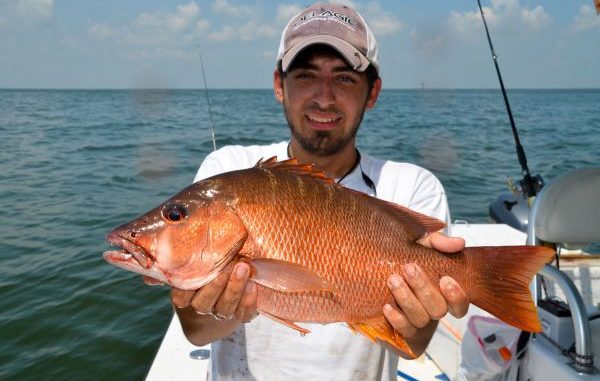
Snapper fishermen have little trouble separating a mangrove snapper (properly called gray snapper) from a red snapper, since the popularity of mangrove snappers has soared in recent years.
As red snapper limits have steadily declined down to a miserable two fish, the limit on mangrove snappers has remained at 10. This limit is an aggregate limit with seven other snapper species: mutton, yellowtail, cubra, queen, blackfin, silk and wenchman.
Few of these other species turn up in catches while mangrove snapper fishing. But one species does, and it’s not all that unusual — the dog snapper, so named because it has somewhat prominent teeth.
But its teeth aren’t the best identification feature. What is unmistakable is the bleached-out-looking wedge directly beneath each of its eyes. It looks for all the word like tears from the eyes have washed the pigment away.
Hence my name for the creature: the “crying dog.”
Being able to identify the fish is of more than “gee-whiz” value. For some reason, this fish has been removed from the aggregate limit and has not had a limit of its own implemented.
An angler could keep a hundred of them, if he caught them.
While catching that many is not likely in any one trip, a surprising number of them turn up in mangrove fishermen’s hands. Two of them were brought to the boat this trip.
Mangrove snapper colors can vary quite a bit, from gray to strong brick red. So when this fish turns up in their landing net, most fishermen simply comment on its bright colors and ice it up as a mangrove snapper.
But in this day of tight limits and closed seasons, every good-eating fish that can be added to the box is welcome, especially if it doesn’t count against any limits.
So keep your eyes peeled for the crying dog.
